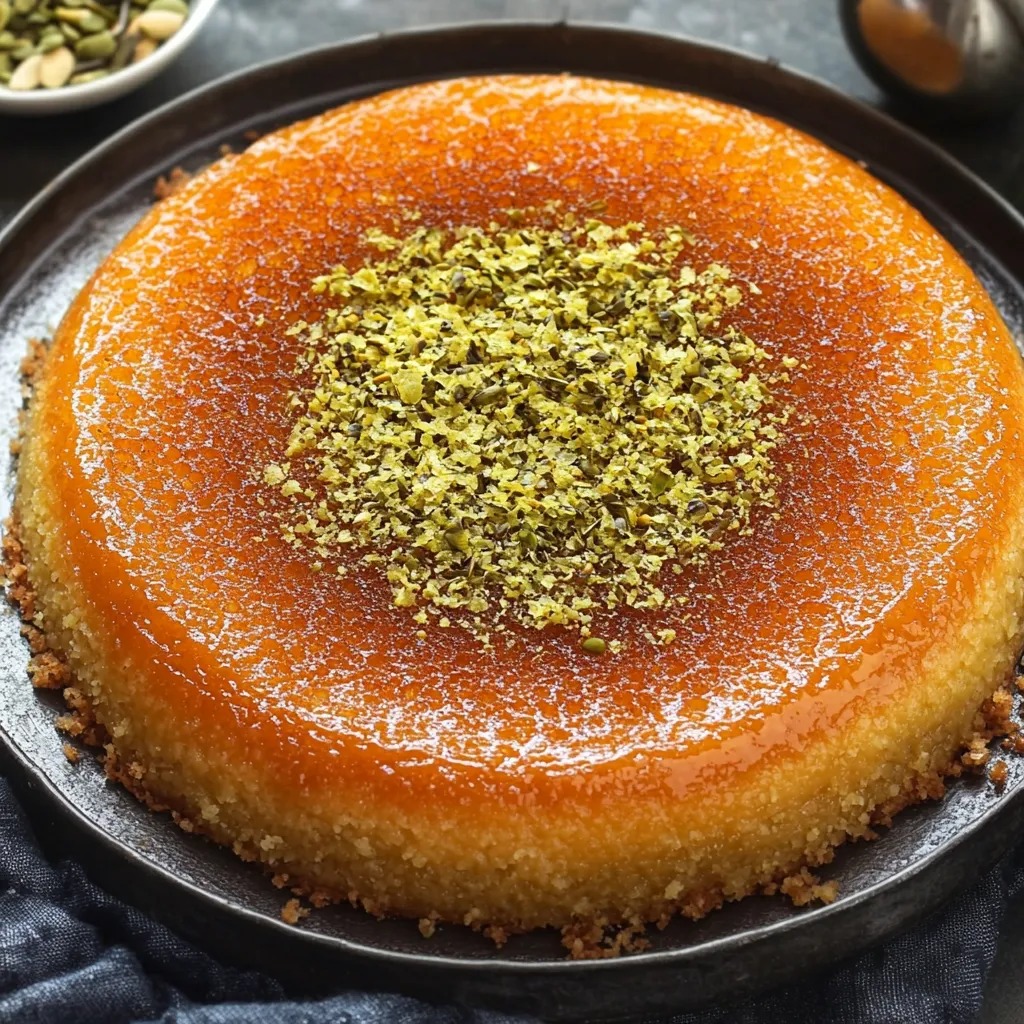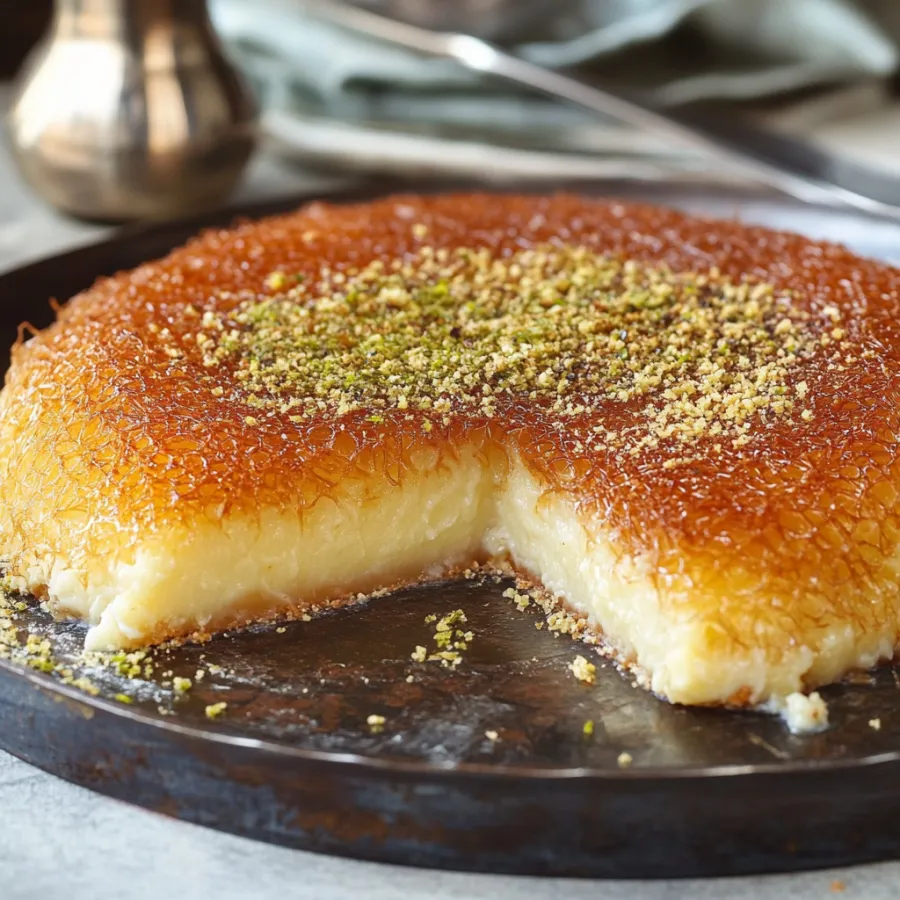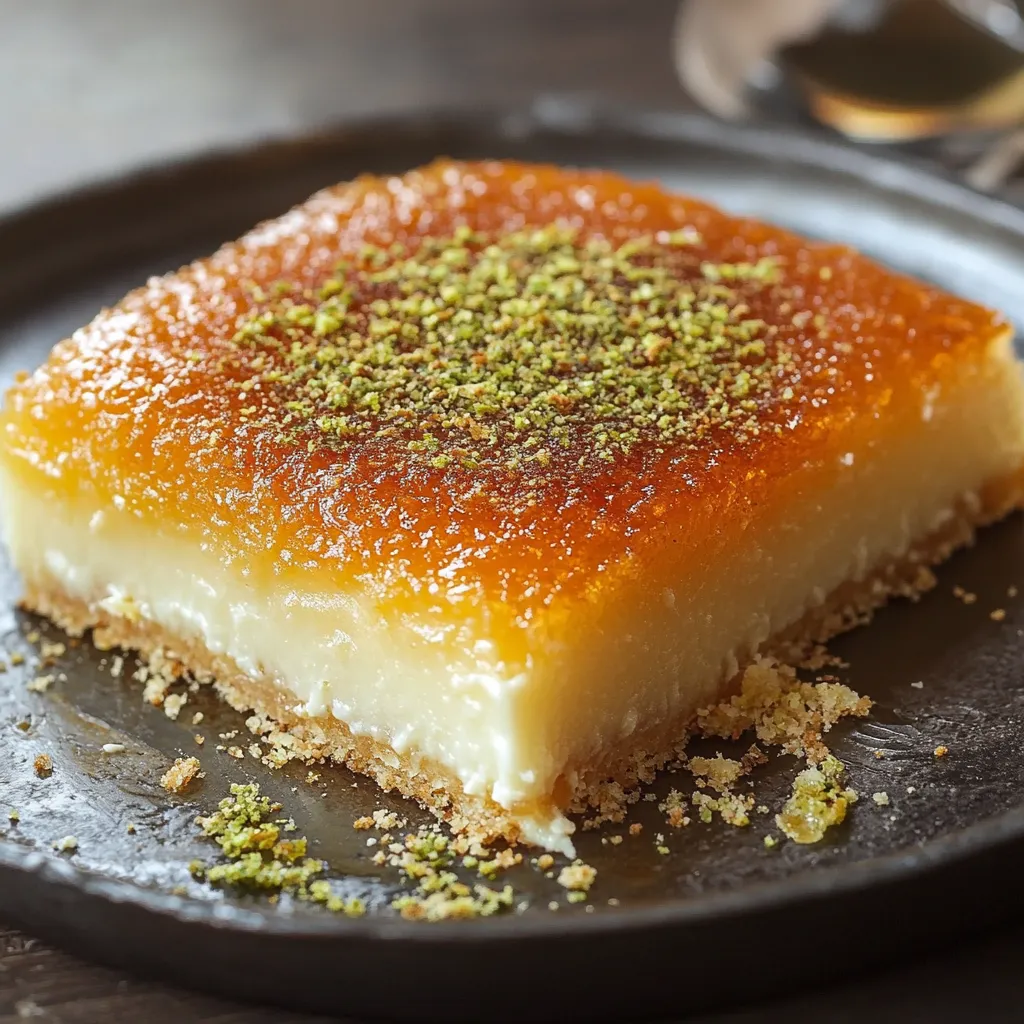 Pin it
Pin it
This spectacular Middle Eastern dessert combines a lusciously crisp kataifi pastry exterior with a molten sweet cheese filling, all soaked in aromatic rose water syrup. The contrasting textures create an unforgettable sensory experience as you break through the golden crust into the warm, gooey center. Each bite delivers the perfect balance of butteriness, sweetness, and subtle floral notes, finished with a sprinkle of vibrant pistachios. Popular throughout the Levant region, this celebratory treat graces tables during special occasions and holidays.
I first experienced knafeh during a gathering at my Lebanese friend's home where her grandmother prepared it tableside. The theatrical presentation of flipping the golden pastry onto a serving platter and immediately drizzling it with fragrant syrup captivated everyone. When I finally tasted the contrast between the crisp exterior and molten center, I understood why this dessert holds such cultural significance.
Middle Eastern Ingredients
- Kataifi pastry: Provides the signature crispy texture. Look for frozen versions in Middle Eastern markets.
- Sweet cheese: Traditional Nabulsi or Akkawi cheese works best, but mozzarella and ricotta create an excellent substitute.
- Rose water: Select authentic rose water for a delicate floral aroma that defines knafeh.
- Clarified butter: Coats the kataifi for perfect crispness without burning.
Creating Perfect Knafeh
- Aromatic Syrup Preparation:
- Combine water and sugar over medium heat, stirring until dissolved. Simmer for 5 minutes, then add rose water and lemon juice. Cool completely before use.
- Pastry Preparation Technique:
- Thaw kataifi pastry, then cut into small pieces. Toss with melted butter until evenly coated.
- Layering and Assembly:
- Press half the kataifi into a buttered pan, layer with cheese, then cover with the remaining kataifi.
- Baking and Finishing:
- Bake at 375°F for 45 minutes until golden. Flip onto a serving platter and immediately pour cooled syrup over the top. Garnish with crushed pistachios.
 Pin it
Pin it
My first attempt at knafeh taught me the importance of properly buttering every strand of kataifi. Following my Lebanese neighbor's advice to coat each strand evenly transformed my results, creating the crispness that contrasts beautifully with the melting cheese center.
Serving Inspiration
Serve warm with extra syrup on the side for guests to adjust sweetness. For elegant plating, cut into diamond-shaped portions and garnish with edible rose petals and pistachios. During holiday gatherings, surround with fresh figs, dates, and glasses of mint tea.
Regional Variations
Lebanese knafeh nabulsieh often features a layer of semolina cream instead of cheese. Turkish künefe is served in individual metal pans for extended warmth. Palestinian knafeh from Nablus uses special white brined cheese with a higher cheese-to-pastry ratio.
Storage Solutions
For best texture, consume immediately. Refrigerate leftovers loosely covered with foil for up to 3 days. Reheat in a 300°F oven for 15 minutes rather than microwaving. Assemble ahead and freeze unbaked for up to a month, baking directly from frozen with an additional 15 minutes.
 Pin it
Pin it
Making knafeh became a way for me to connect with my cultural heritage. The first time I served it to my grandmother, she became emotional at the familiar aroma of rose water and butter. That moment reinforced how food carries memories and traditions, making the process of baking knafeh just as meaningful as enjoying the final result.
Frequently Asked Questions
- → What type of cheese is traditionally used in Knafeh?
- Traditional Knafeh uses Nabulsi or Akkawi cheese, which are sweet Middle Eastern cheeses. However, you can substitute with fresh mozzarella (patted dry) or a combination of ricotta and mozzarella as mentioned in the recipe.
- → Where can I find kataifi (shredded phyllo) dough?
- Kataifi dough can be found in Middle Eastern or Mediterranean grocery stores, international food sections of larger supermarkets, or specialty food shops. It's typically sold frozen and needs to be thawed before use.
- → Can I make Knafeh in advance?
- Knafeh is best served fresh and warm. You can prepare the components ahead of time (syrup and buttered kataifi), but assembly and baking should be done shortly before serving for the best texture and taste.
- → Why is my Knafeh not holding together when inverted?
- This typically happens if the kataifi wasn't pressed firmly enough into the pan or if there wasn't enough butter to bind it. Make sure to press the dough firmly and ensure all strands are well-coated with butter.
- → What's the purpose of the food coloring in this recipe?
- The orange-gold coloring is traditional and purely aesthetic. It gives knafeh its distinctive appealing color, but it doesn't affect the flavor and can be omitted if preferred.
